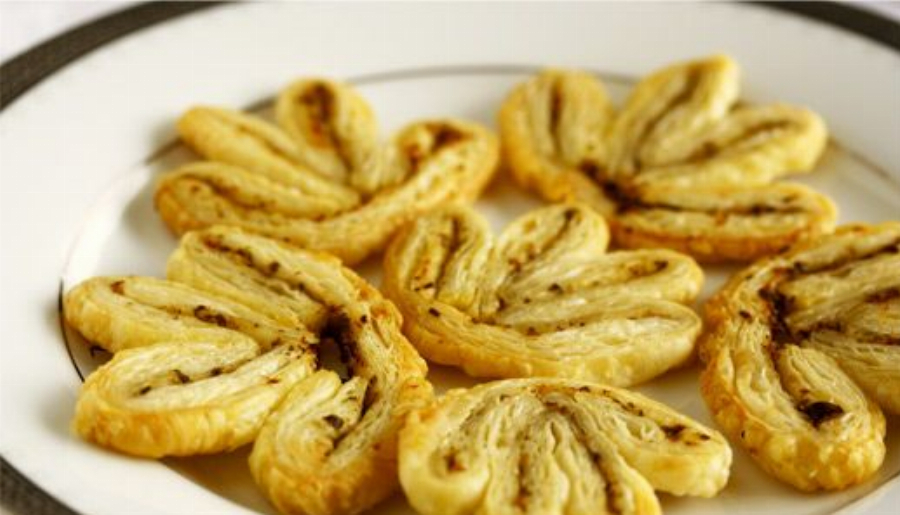Pesto palmiers are quick and easy appetizers for an elegant party. I made these pesto palmiers bite-sized so that they would work well at a dinner party we’re hosting tonight. I have to thank Rianne from Art of Dessert for her post that reminded me of how to make them. As she said, palmiers look incredibly fancy, but in reality are quite easy to make. On top of that, the puff pastry “logs” of palmiers can be frozen for later use. If you’re storing frozen pesto cubes as I’ve suggested in the past, this is a recipe that you can whip up whenever you’re in a pinch, and no one will be the wiser!
1. Info for Pesto Palmiers (Basil Pesto Elephant Ears)
- Cook Time: unavailable
- Total Time: unavailable
- Servings: 45
- Calories: unavailable
2. Ingredients for Pesto Palmiers (Basil Pesto Elephant Ears)
- 6 (5 x 5-inch) squares puff pastry dough (store-bought), thawed at room temperature
- 4 tablespoons pine nuts
- 2-1/2 cups sweet basil leaves, tightly packed
- 1 clove garlic, finely minced
- 1 (3-inch) chunk parmesan cheese
- 1/3 cup olive oil
- 3/4 teaspoon salt
- 1/2 teaspoon white pepper, freshly ground
3. Directions:
- Preheat the oven to 425°F.
- Dry toasted pine nuts: Lightly dry toast the pine nuts in a small skillet over medium high heat until slighted golden. You have to be very careful; otherwise the pine nuts could burn easily. Transfer to a plate.
- Keeping a bright green color: Blanch (dip for 10 seconds in boiling water then transfer to an ice-cold bath) the basil, drain, then dry thoroughly of all water, pat dry on a paper towel. Roughly chop – you’ll get approximately 1 cup of greens.
- How to make freshly grated parmesan powder: Cut up a chunk of parmesan and chop the morsels in a mini-food processor until it’s a fine powder. Gather about 4-5 tablespoons.
- How to make basil pesto: In a mini-food processor or mini-blender, combine 1 cup of (10-second blanched) sweet basil, 1 clove of garlic, 4 tablespoons of (toasted) pine nuts and 4 tablespoons of parmesan cheese. Pulse and slowly add about 1/3 cup (or more) of olive oil until it becomes a thick paste. Season with salt and pepper.
- Spreading the pesto: For each rectangle of puff pastry, roll the dough out so that it increases in size a bit, but most important, so the puff pastry becomes more pliable. Spread about 2 teaspoons of basil pesto. The layer should be very thin so it doesn’t burst on the side when rolled. Creating palmiers (folding technique): Fold both sides so that they meet in the middle, then fold the top edge to the bottom edge and the left edge to the right edge. You’ll get a (1-¼ x 2-½-inch) “log”. Repeat for the next 5 squares of puff pastry dough. At this point, you can wrap them in plastic wrap and chill the dough in the refrigerator (see tips) or freezer or slice and bake them right away.
- Baking time: Slice the logs into about ⅓-inch thick pieces. Place the palmiers on a baking sheet previously lined with parchment paper. Make sure they’re spaced out so they don’t touch each other when they expand. Bake in 3 batches for 8 minutes at 425°F. Open the oven and flip each palmier. Lower the heat to 400°F and bake for another 4-5 minutes. Using a spatula, transfer to a cooling rack and allow to cool before serving.
- Bon appétit!

